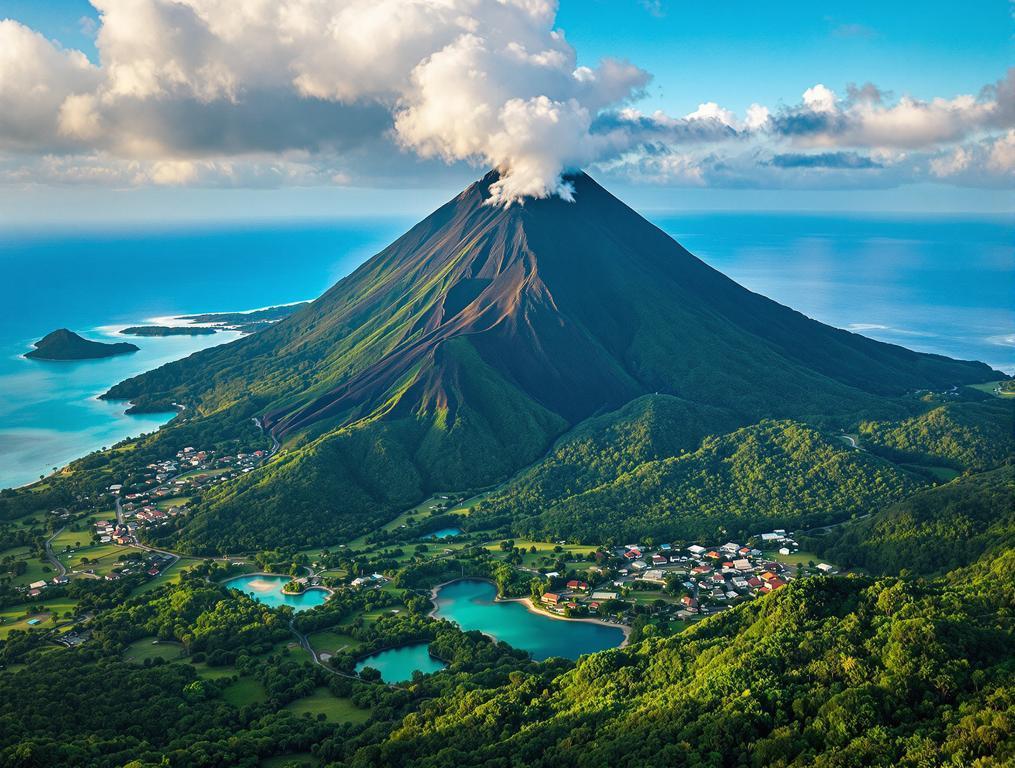I’m standing on a hillside in Bougainville, watching clouds swirl around Mount Balbi’s volcanic peak as a group of villagers explain the independence referendum that will likely create the world’s newest nation. The warm Pacific breeze carries their words with unmistakable pride. In 2019, an overwhelming 98% of Bougainville’s 300,000 residents voted to separate from Papua New Guinea, setting in motion a process that could culminate in full nationhood by 2027.
“We are already a nation in our hearts,” explains my guide, pointing toward distant islands shimmering in the turquoise sea. “Soon the world will recognize what we’ve always known.” This autonomous region of Papua New Guinea sits at a historic crossroads—politically independent in spirit but officially in transition.
Bougainville’s 98% Independence Vote: The World’s Next Country Taking Shape
The path to becoming Earth’s newest sovereign state began with a bloody civil war in the 1980s over the massive Panguna copper mine, once the world’s largest open-pit mine. Today, that conflict has transformed into a peaceful political movement with unmistakable momentum.
Unlike Wallis and Futuna’s traditional kingdom structure, Bougainville is pioneering a modern democratic path to independence that could reshape Pacific geopolitics. The region operates under an autonomous government with its own president, parliament, and constitution—essentially functioning as a state-in-waiting.
“Em nau!” (It’s time!) is the phrase I hear repeatedly in markets and village gatherings. This Tok Pisin expression has become the unofficial slogan of the independence movement, capturing both patience and determination.
What makes this political transition especially compelling is that it’s happening in a place of extraordinary natural beauty that few travelers ever experience. Bougainville’s 8,510 square kilometers encompass pristine rainforests, active volcanoes, and coral reefs that remain largely unexplored.
Mount Balbi’s 2,715m Volcanic Majesty: Natural Wonders Without Hawaii’s Crowds
While Mount Balbi’s 2,715-meter peak doesn’t reach the heights of some volcanic islands like Tenerife’s Mount Teide, its active status and untouched slopes offer something increasingly rare: a volcanic adventure without the tour buses and selfie sticks.
“I’ve hiked volcanos in Hawaii and Indonesia, but here I felt like the first person discovering these places. We saw steam vents with no barriers, no signs, just pure nature on its own terms.”
The trek through cloud forests to Balbi’s summit reveals an ecological gradient that changes dramatically with elevation—from dense jungle to alpine grasslands. Unlike Hawaii’s commercialized volcanic parks, Bougainville’s natural wonders remain gloriously undeveloped.
Bougainville’s pristine beaches rival those of Japan’s hidden Ishigaki Island, offering crystal waters without the tourist infrastructure. Marine life thrives in the surrounding reefs, with WWII wrecks creating artificial habitats for countless species.
19 Indigenous Languages: Cultural Immersion Beyond Tourist Tracks
Perhaps most remarkable is Bougainville’s extraordinary linguistic diversity. Despite its modest population, the region supports 19 distinct indigenous languages—a cultural treasure trove that has developed in relative isolation.
Like Cape Verde’s Santo Antão, Bougainville offers authentic cultural experiences largely untouched by mass tourism. The difference is in the degree of isolation—while Bougainville sits just 500 miles from Australia, it might as well be on another planet for how rarely outsiders visit.
Local markets buzz with activity as women sell woven baskets, woodcarvings, and fresh produce. Children practice traditional dances in village clearings. This isn’t cultural performance for tourists—it’s simply daily life continuing as it has for generations.
What The Guidebooks Won’t Tell You
Visiting Bougainville requires planning. The main gateway is Buka Airport, reached via flights from Port Moresby. Cross the Buka Passage by local ferry (5 Kina, roughly $1.40) to reach the main island.
The dry season (May-October) offers optimal conditions for hiking Mount Balbi and exploring WWII relics. Local guides are essential—not just for navigation but for cultural context and safety. Expect to pay $30-50 per day for knowledgeable accompaniment.
For accommodation, small guesthouses in Buka and Arawa offer basic rooms for $20-40 per night. However, the most memorable experiences come through village homestays arranged through local guides.
As I pack my gear for the journey back to Port Moresby, I can’t help reflecting on the privilege of witnessing a nation in its formative moments. Sarah would love photographing the volcanic landscapes, and Emma would be fascinated by the children’s games played with simple shells and sticks.
Bougainville feels like a place balanced on the cusp of transformation—holding tight to ancient traditions while stepping boldly toward a sovereign future. Visit now, and you won’t just discover a hidden paradise; you’ll experience the birth of Earth’s newest nation.
